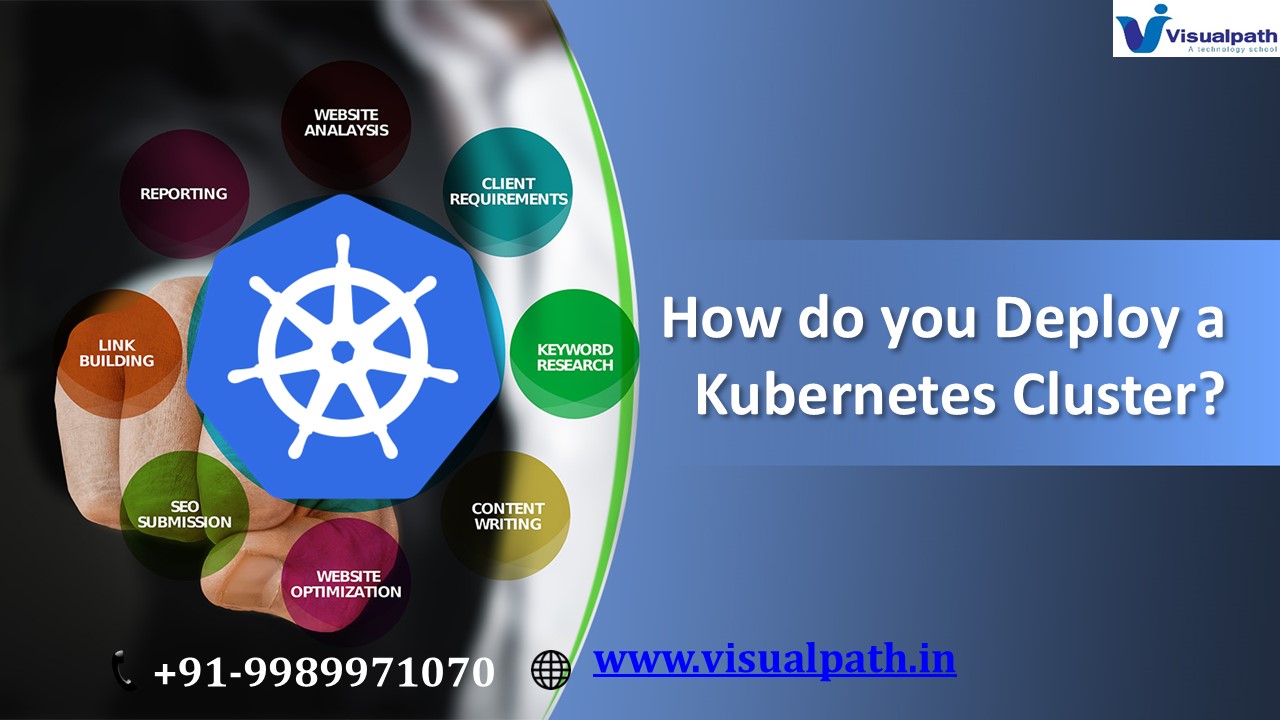Docker and Kubernetes Training | Kubernetes Online Training (2) PowerPoint PPT Presentation
Title: Docker and Kubernetes Training | Kubernetes Online Training (2)
1
How do you Deploy a Kubernetes Cluster?
www.visualpath.in
91-9989971070
2
Introduction
- Kubernetes has emerged as the go-to platform for
orchestrating and managing containerized
applications. - Kubernetes clusters provide a scalable, robust,
and automated way to manage applications and
services, making it the preferred choice for
modern infrastructure. - Deploying a Kubernetes cluster, however, can seem
complex if you are new to the platform
www.visualpath.in
3
Kubernetes and Its Components
- Master Node The master node is responsible for
managing the cluster. It includes components like
the API server, scheduler, controller manager,
and etcd, a key-value store that holds the
cluster configuration and state. - Pods Pods are the smallest deployable units in
Kubernetes, representing a single instance of an
application or service.
www.visualpath.in
4
Kubernetes Cluster
- Infrastructure Ensure that you have the
necessary infrastructure, whether its
cloud-based (such as AWS, Google Cloud, or Azure)
or on-premises virtual machines. You'll need at
least one master node and one or more worker
nodes. - Container Runtime Kubernetes supports several
container runtimes, such as Docker, CRI-O, or
containerd. The container runtime needs to be
installed on each node to manage container
lifecycles.
www.visualpath.in
5
Deploy a Kubernetes Cluster
- There are several ways to deploy a Kubernetes
cluster, including using managed Kubernetes
services like Google Kubernetes Engine (GKE) or
Amazon Elastic Kubernetes Service (EKS), but for
this article, we'll focus on deploying a cluster
from scratch using kubeadm, a command-line tool
that simplifies the process.
www.visualpath.in
6
Benefits of Kubernetes
- Scalability Kubernetes automatically manages the
scaling of applications based on demand, ensuring
that resources are utilized efficiently. - Resilience Kubernetes provides self-healing
capabilities by automatically restarting failed
containers and ensuring high availability. - Automation Kubernetes automates deployment,
scaling, and management of containerized
applications, reducing manual intervention.
www.visualpath.in
7
Conclusion
- Deploying a Kubernetes cluster from scratch may
seem complex, but by following these steps and
using tools like kubeadm, you can set up a
robust, scalable, and highly available
environment. Whether youre deploying a small
application or a large-scale enterprise service.
www.visualpath.in
8
CONTACT
For More Information About Docker Kubernetes
Online Training Address- Flat no 205,
2nd Floor,
Nilgiri Block, Aditya Enclave,
Ameerpet, Hyderabad-16 Ph No
91-9989971070 Visit www.visualpath.in
E-Mail online_at_visualpath.in
9
THANK YOU
Visit www.visualpath.in

